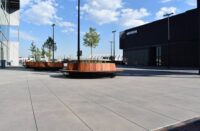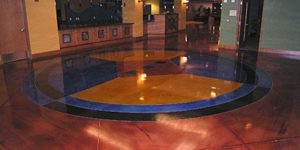Raise your hand if your current projects are chock full of profit with plenty of room for labor overruns. Put your hand down if you raised it because you are just showing off. You don’t need me to tell you how tough today’s market is for contractors, and few will disagree that the ball is in our customers’ court. Razor-thin margins allow no room for error in one of the many things we used to pay little attention to.
I was on a job the other day when a young contractor, not in our trade, battled with the homeowner and her indecisiveness. The contractor was very patient — in fact, so patient he spent all his profit doing and then redoing his work until finally satisfying the customer. While this young contractor was losing money on this job he could have been making money on another.
I’m always looking for ways you can put more cash into your pocket. Some may seem simple, but I can tell you from contracting in decorative concrete for 20 years that it is the little details that keep us from profit.
The profit process is threefold. You must sell work, complete it on time and under budget, and then collect. If one of these steps is derailed then you have a severe leak in the profit bucket. If your customer can’t make up their mind then this three-step process is in jeopardy.
When not to design
Most contractors or at least all new ones confuse being an installer or contractor with being a designer. They assume they must be both to be in the decorative concrete trade. Let’s look at both jobs.
If a potential customer calls your firm looking for ideas for staining at their new retail business, you most likely will be asked to be part of the design phase. Your first meeting will be on-site and you will quickly figure out that a vague design must be determined before you can quote the project. Your next contractor-to-customer contact will be face-to-face as you present how much the project will cost and maybe one simple option. At this point, you are the designer and the decorative contractor, at least if the job is awarded to you. In fact, the only way you can start the three-step process discussed above is to corral your customer into a design.
If this process is rushed, you can almost guarantee yourself a job delay while the customer makes real-time decisions in the field. While you and your crew stand and watch, I might add. If you find yourself both designer and contractor be sure to look ahead at each decision-making issue and have these issues decided upon before starting the project.
Now let’s compare this scenario to one that starts with a customer calling who already has a sketch that shows design and stain color. Do not redesign the project even if it differs from your taste. What you may not know is how hard the designer had to work to get the decision-maker, the customer, to this point. Confusing the situation will only delay the process and possibly keep your firm from landing the project. Remember, you are the installer at this point and the design is out of your hands.
I vividly remembering installing a pink driveway for a customer and asking Frank, my foreman, to park our work trucks around the corner. The customer loved it and I loved cashing his check. Taste is different for all of us and your job is not to critique design. The only exception is if the design is lacking in long-term functionality.
I still recommend the standard steps like job-site samples, grout options, sealing options and a maintenance plan. Most decorative concrete designs don’t include everything, so be sure to answer questions before they come up. Remember, the profit margin is thin, so there is no reason to leave decisions unmade.
They’re still waffling?
I can’t remember ever quitting a decorative job, but there have been a few times I wanted to. Some customers just take us to this point, and my feeling is that they are just complicated folks.
If you have worked the process as described but still find yourself with the undecided customer, you must understand one important thing. You cannot keep throwing things against the wall in hopes they will see something they like. Nothing will burn the profit pile quicker than in-field trial and error.
Sometimes customers will go into a panic, talking about job delays and pressuring you into moving forward even if the forward motion is unknown. Don’t fall for this, because our work is extremely permanent and very expensive to change in most cases. I recommend slowing the process down, calmly. I will usually move my crew off the job, and then either a major player within my company or I will meet after hours with the customer to work through the issue. Meeting after hours will create a one-on-one uninterrupted atmosphere where decisions can be made.















